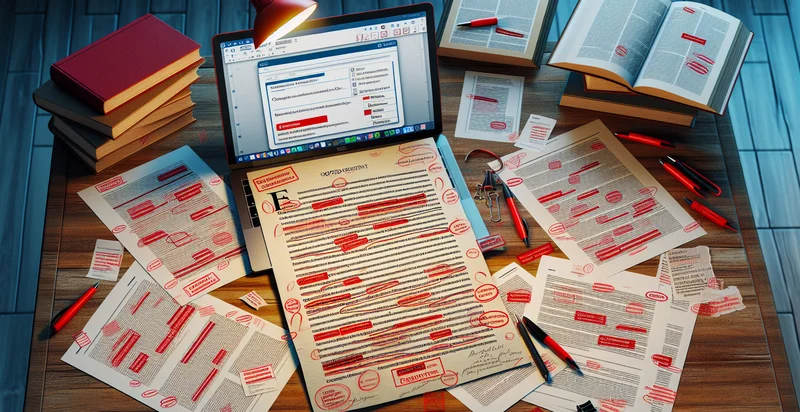Identify if a document looks plagiarized
using AI
Below is a free classifier to identify if a document looks plagiarized. Just upload your image, and our AI will predict if a document is plagiarized - in just seconds.

Contact us for API access
Or, use Nyckel to build highly-accurate custom classifiers in just minutes. No PhD required.
Get started
import nyckel
credentials = nyckel.Credentials("YOUR_CLIENT_ID", "YOUR_CLIENT_SECRET")
nyckel.invoke("if-a-document-looks-plagiarized", "your_image_url", credentials)
fetch('https://www.nyckel.com/v1/functions/if-a-document-looks-plagiarized/invoke', {
method: 'POST',
headers: {
'Authorization': 'Bearer ' + 'YOUR_BEARER_TOKEN',
'Content-Type': 'application/json',
},
body: JSON.stringify(
{"data": "your_image_url"}
)
})
.then(response => response.json())
.then(data => console.log(data));
curl -X POST \
-H "Content-Type: application/json" \
-H "Authorization: Bearer YOUR_BEARER_TOKEN" \
-d '{"data": "your_image_url"}' \
https://www.nyckel.com/v1/functions/if-a-document-looks-plagiarized/invoke
How this classifier works
To start, upload your image. Our AI tool will then predict if a document is plagiarized.
This pretrained image model uses a Nyckel-created dataset and has 2 labels, including Original Content and Plagiarized Content.
We'll also show a confidence score (the higher the number, the more confident the AI model is around if a document is plagiarized).
Whether you're just curious or building if a document looks plagiarized detection into your application, we hope our classifier proves helpful.
Related Classifiers
Need to identify if a document looks plagiarized at scale?
Get API or Zapier access to this classifier for free. It's perfect for:
- Academic Integrity Assurance: Educational institutions can utilize the 'if a document looks plagiarized' identifier to automatically assess the originality of student submissions. This function can help instructors maintain academic standards by detecting instances of plagiarism, thus facilitating a fair evaluation of student work.
- Research Publication Screening: Journals and publishers can implement this tool to screen submitted manuscripts for potential plagiarism before peer review. By identifying plagiarized content early in the publication process, they can uphold the integrity of scientific literature and reduce the risk of fraudulent claims.
- Content Creation Quality Control: Marketing and content creation agencies can leverage this function to evaluate blog posts, articles, and marketing copy for originality. This ensures that all published content is unique, reinforcing brand credibility and enhancing SEO rankings.
- Legal Document Verification: Law firms can employ the identifier to assess the originality of legal documents and filings. By flagging potentially plagiarized content, firms can prevent legal repercussions and maintain ethical practices in legal representation.
- Educational Material Development: Publishers of educational materials can use the tool to verify the originality of textbooks and other learning resources. By ensuring that the content is not plagiarized, they can protect their intellectual property and maintain the trust of educators and students.
- Online Course Validation: E-learning platforms can integrate this identifier to assess the originality of course materials uploaded by instructors. This helps to ensure that all teaching content is unique, promoting a higher quality learning experience for students.
- Job Application Review: Human resources departments can utilize the function to analyze resumes and cover letters for originality. By detecting plagiarized content in job applications, organizations can ensure that candidates are presenting their authentic qualifications and experiences.


